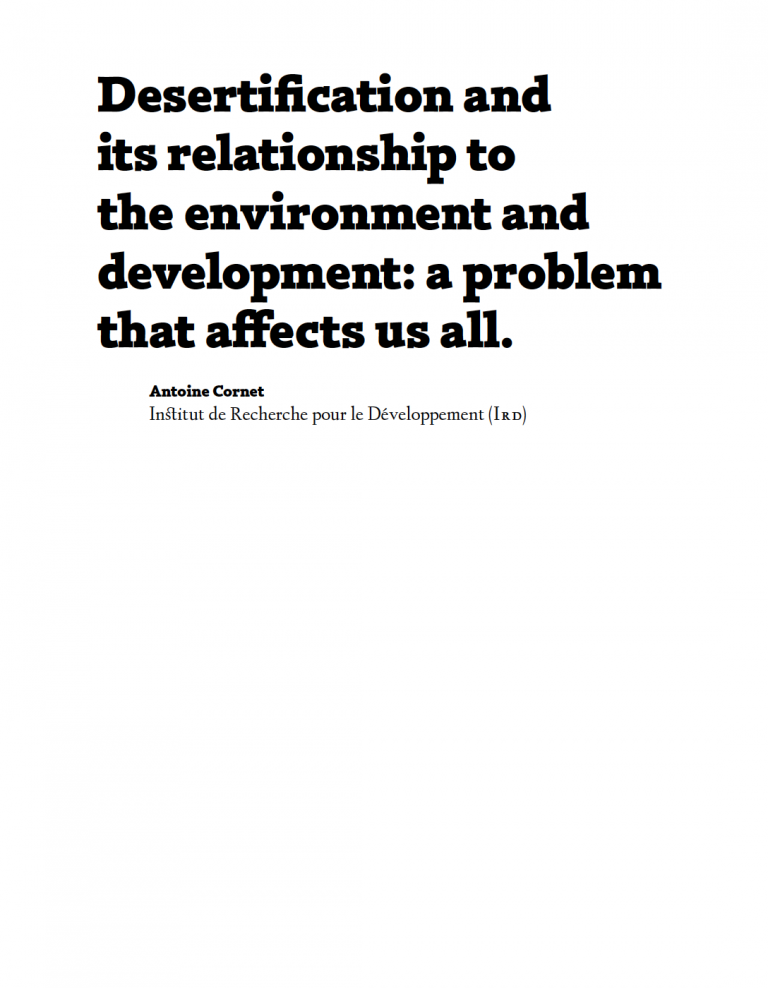A problem that affects us all
There is a wide variety of terms used to describe desertification and its expansion across geographical space which no doubt stems from attempts to attract increased resources to combat the phenomenon. Unfortunately, by extending the concept, its meaning has been weakened, resulting in the opposite of what was intended. A clear notion of desertification is essential so that it may be applied diagnostically and operationally as a value.
Monitoring and assessment of desertification both have dual objectives. Firstly they measure and evaluate the degree of land degradation in order to diagnose the seriousness of the problem. And secondly they measure the impact of action undertaken. They rely on in-depth knowledge of the mechanisms and processes involved, and on the development of specific tools, such as indicators and observatories.
Desertification is both an environmental and developmental problem. It affects local environments and populations’ ways of life. Its effects, however, have more global ramifications concerning biodiversity, climatic change and water resources. The degradation of terrain is directly linked to human activity and constitutes both one of the consequences of poor development and a major obstacle to the sustained development of dryland zones. Beyond the application of appropriate techniques, efforts to combat desertification should be accompanied by measures to stimulate economic and social change and should also be an integral part of development programs.
The United Nations Convention to combat desertification indeed expresses a change of direction in this respect. Its founding objective is to encourage governments to undertake Commitments at State level or in terms of aid to development so as to define legislative and statutory frameworks that will enable populations to plan and manage their own natural resources. Where the convention has been less effective, is in the setting up of specific development tools such as funding mechanisms or tools that effectively incorporate science and technology into their processes. It has nevertheless lead to real progress, particularly concerning the mobilisation of human resources. Its future and its implementation will depend on the parties involved and their ability to find swift partnership solutions.



